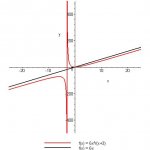Hi, I am really confused as to how to solve this problem. I got an answer of six but in my book, it says that the answer is -oo. Here is what I did:
1. lim 6x^2/x+3= 6x^2/6x^2/x/x+3/x^2=6/1+0=6. If this is not correct, how would you do the problem? And if you could explain it too, that would be great!
-->-oo Thanks!
1. lim 6x^2/x+3= 6x^2/6x^2/x/x+3/x^2=6/1+0=6. If this is not correct, how would you do the problem? And if you could explain it too, that would be great!
-->-oo Thanks!

